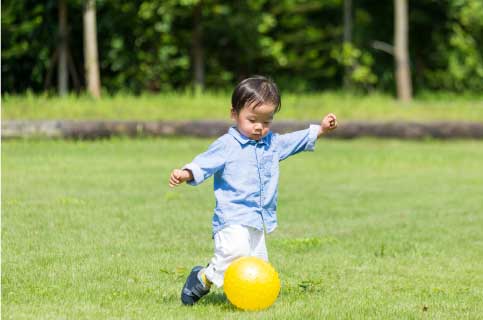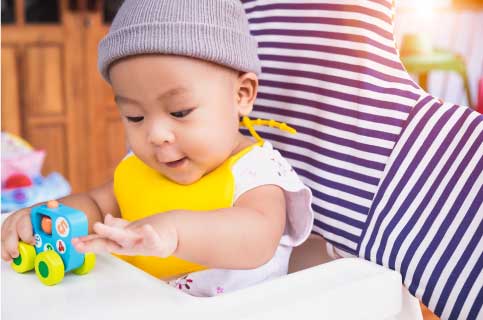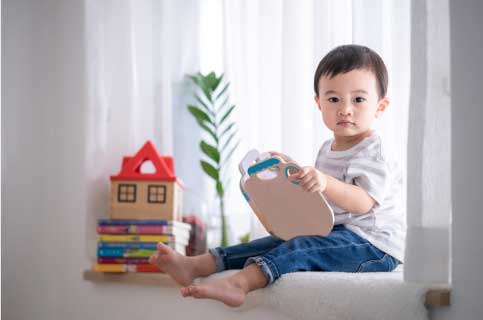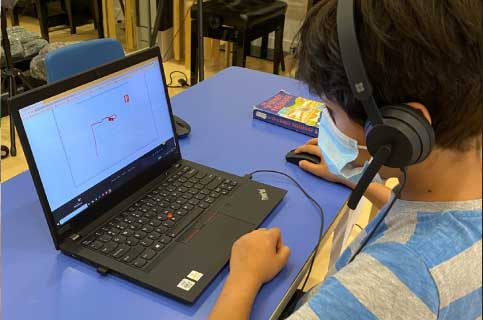By subscribing you are agreeing to our Privacy Policy
Ask the expert: the ultimate fine motor skills guide

Dr Will Chien has had an extensive career as an occupational therapist working with children who have physical, developmental or intellectual disabilities and their families both before and while obtaining his PhD from Monash University. He is currently an Associate Professor in the Department of Rehabilitation Sciences at the Hong Kong Polytechnic University and has strong research interests in developing children’s hand skill-related measures.
Q: What is the difference between fine and gross motor skill dexterity in a child?

A: Gross motor usually refers to the use of large muscle systems for movements such as throwing a large ball or running. On the other hand, fine motor involves the use of small muscle systems, which may include the movements of inserting a peg or translating a coin from the palm to fingers. Dexterity means the ability to make use of these muscle systems with accuracy and speed. In simple words, the difference in the dexterity between these two motor systems is that children are able to throw balls to the playmates accurately and smoothly (gross motor skill dexterity) or inserting pegs to make shapes in the pegboard agilely and precisely (fine motor skill dexterity).
Q: Why parents of younger children should care about the fine motor skill development of their child? Why is it considered such an important developmental milestone?

A: For young children, there is a rapid motor development period starting around 2 years old. Parents have to understand their child’s development of fine motor skills, because fine motor skills are required to perform basic daily activities such as eating, drinking, toileting, etc. As children are growing, we, as the parents, have to adjust the level of assistance in order to create more opportunities for our children to practice their fine motor skills.
Fine motor skills during early childhood are also related to cognition, self-care, play, and even future academic performance. Thus, it is highly recommended that any parents of young children know some basic developmental milestones of fine motor skills for early identification of possible delay in their children and timely intervention.
Q: At what age of a child should parents pay attention to their motor skill development and what are some of the behaviours that a parent should be concerned about?

A: Parents should pay attention to their children’s motor development at any age, regardless of fine or gross motor skills. Take fine motor as an example, infants at 3 months may already begin to direct arm-reaching movements towards an object that appears at midline, and reach for a desired object accurately at 9 months. They may be able to seize a dowel pin using palmar grasp at 6 months, smaller objects such as a pellet or raisin using pad-to-pad grasp at 10-12 months, various tools using deft and precise grasps by 24 months, and a pencil or crayon using dynamic tripod after 4 years old. Children may also start to manipulate objects in one hand as they grow up.
For example, at about 12-18 months of age, they may pick up small pieces of food, move and hold them in their palm. About 24-30 months of age, they may perform reverse movements like moving small objects from the palm to the fingers. About 4 years of age, they may rotate a pen over and shift it up and down along its shaft with the fingers smoothly about 5.5-6 years old. Most importantly, children may start to show the evident direction of hand preference by 3-4 years of age, and become fully established for their hand dominance by 6 years of age. Parents should be concerned about these milestones, as they contain basic fine motor skills including reaching, grasping, manipulation, and handedness.
Q: How patient should parents be if they think they’ve identified a lag in motor skill development in their child relative to normative standards? Is it better to err on the conservative side and seek expert advice early on or is there a broad range of ages that might be considered ‘typical’ for motor proficiency and therefore they should have some patience?

A: Parents need to seek detailed evaluation and professional advice promptly when they find that their child does not perform movements as well and smoothly as same-aged peers. In clinical practice, we have seen many parents who have their first baby and are not aware of developmental milestones. These children, while physically healthy, may have been identified as having below-average development in some areas. This could be because some parents do not provide age-appropriate play activities for developmental stimulation, protect the child excessively, or focus on specific areas and overlook all-around development. It is always good to look for experienced parents or professionals proactively before the child’s development has been largely affected.
Q: Is there much research on the correlation between fine motor skills and cognitive development?

A: Yes, there are plenty of studies showing the strong evidence on the relationship between fine motor skills and cognitive development. For example, an interrelationship between children’s cognitive and fine motor development has been reported in previous research (De Agostini & Dellatolas, 2001; Seitz et al., 2006). Also, fine motor skills are found to highly link with children’s academic participation and achievement (Beilei, Lui, Qu, & von Hofsten, 2002; Luo, Jose, Huntsinger, & Pigott, 2007; Rosenbaum, Weiss, & Parush, 2003).
Using a simpler example for explanation, children need to use their hands to explore toys (e.g., pressing the button to trigger the sound of a music toy) and learn the relationship between the toys and environments (e.g., understanding the melody of the music and people’s reaction to the music performed). Skills of using the hands (i.e., fine motor skills) are considered the tools of children to learn new things and this supports their cognitive development.
Q: What are the most recent researches regarding hand skills that you’re conducting, and whether this has application beyond rehabilitation?

A: For my research, I have developed three assessments of children’s hand skills, one of which assists therapists in assessing how effectively children are at using their hands to perform activities through observation. Certainly, the original purpose of developing those tools is to use them for describing and evaluating the hand use of children with disabilities such as developmental delay or cerebral palsy. However, two of my tools have also been applied in the research of children without disabilities beyond rehabilitation.
For example, we investigated the effect of using touch-screen tablets on the hand skills of preschool children and found that children with low usage of touch-screen technology showed better hand skills. This finding suggests that parents may still need to provide manipulative play activities requiring hand use (rather than iPad) to foster children’s fine motor skills. These assessments are introduced and available on my website.
Q: You’ve been advising Bizibuz on the design of their motor skill assessment for students in grades 1-3 (a component of their Primary KnowYourChild™ tools). Could you please explain why you decided to assist with this project? Are they pioneering a new approach to motor skill assessment?

A: I decided to assist with this project, because there is a strong need for motor skill assessment for students in grades 1-3, especially for parents who would like to know their child’s condition. Most clinical assessments for school-aged children are performance-based and have to be administered by qualified therapists. There have been not many instruments parents could access for a better understanding of their child’s motor skills. Bizibuz’s design of motor skill assessment is innovative and its purpose exactly fits with parents’ needs in general populations. That is why I provided advising assistance with their assessment development.
Q: The Bizibuz motor skill assessment assesses three areas of fine motor development – precision, dexterity and bilateral coordination. Could you please explain why these three areas were pinpointed for study?

A: As I mentioned above, dexterity involves movement with accuracy and speed. Thus, fine motor precision is fundamentally important before the movement becomes dexterous. Further, two hands are needed for most of daily and academic activities, explaining why Bizibuz motor skill assessment includes bilaterial co-ordination component.
The Bizibuz approach was based on trying to replicate movements commonly found in clinical assessments such as the Bruinunks-Oseretsky Test of Motor Proficiency, Second Edition (BOT-2) and the Movement Assessment Battery for Children, Second Edition (MABC-2). The Bizibuz assessment targets these three areas for testing because it was possible to replicate similar actions to the in-person tests using computer games played on a keyboard and / or mouse.
For example, precision exercises have typically involved tracing, cutting or folding and the same steadiness of hand is involved in using a mouse to trace on a computer screen; manual dexterity activities have typically involved placing pegs in a pegboard and this could be modeled by asking children to make a pincing action using specific keys on the keyboard and then having them play a game that required them to move that hand relatively quickly and accurately across to the other side of the keyboard; and finally bilateral co-ordination could be tested using a game format again requiring dual hand control.
Q: Did you use existing research as a basis for your suggestions to Bizibuz regarding test design and speed of game elements?
A: Yes, we followed several existing research findings to decide the format and parameters to be included in the Bizibuz motor skill assessment. For example, we modified the format of the two existing performance-based assessments mentioned above to construct the precision and dexterity assessment. We also retried the performance parameters from existing norms to decide absolute speed and relative speed of actions at different ages for the dexterity and bilateral co-ordination games (Poole, et al. 2005; Bucsuhazy & Semela, 2017).
Q: Finally would you mind please outlining where parents can go for assistance if they suspect their child has a motor dexterity problem?
A: It is not easy to get timely assistance if parents suspect their child has a fine motor dexterity problem, particularly for school-aged children. Most public services and resources put more effort in early identification and intervention with children aged younger than six years. If the child’s age falls within this preschool period, parents are advised to contact NGOs such as Heep Hong Society, SAHK, Hong Kong Christian Service and seek for pre-school rehabilitation services. The Government has a useful website for the list of pre-school rehabilitation services.
If the child’s age is beyond six years old, parents could seek professional assessment or intervention from private practice, including Hong Kong Polytechnic University Rehabilitation Clinic, the Links Child Development Center, the SPOT Interdisciplinary Children's Therapy Centre, etc.



